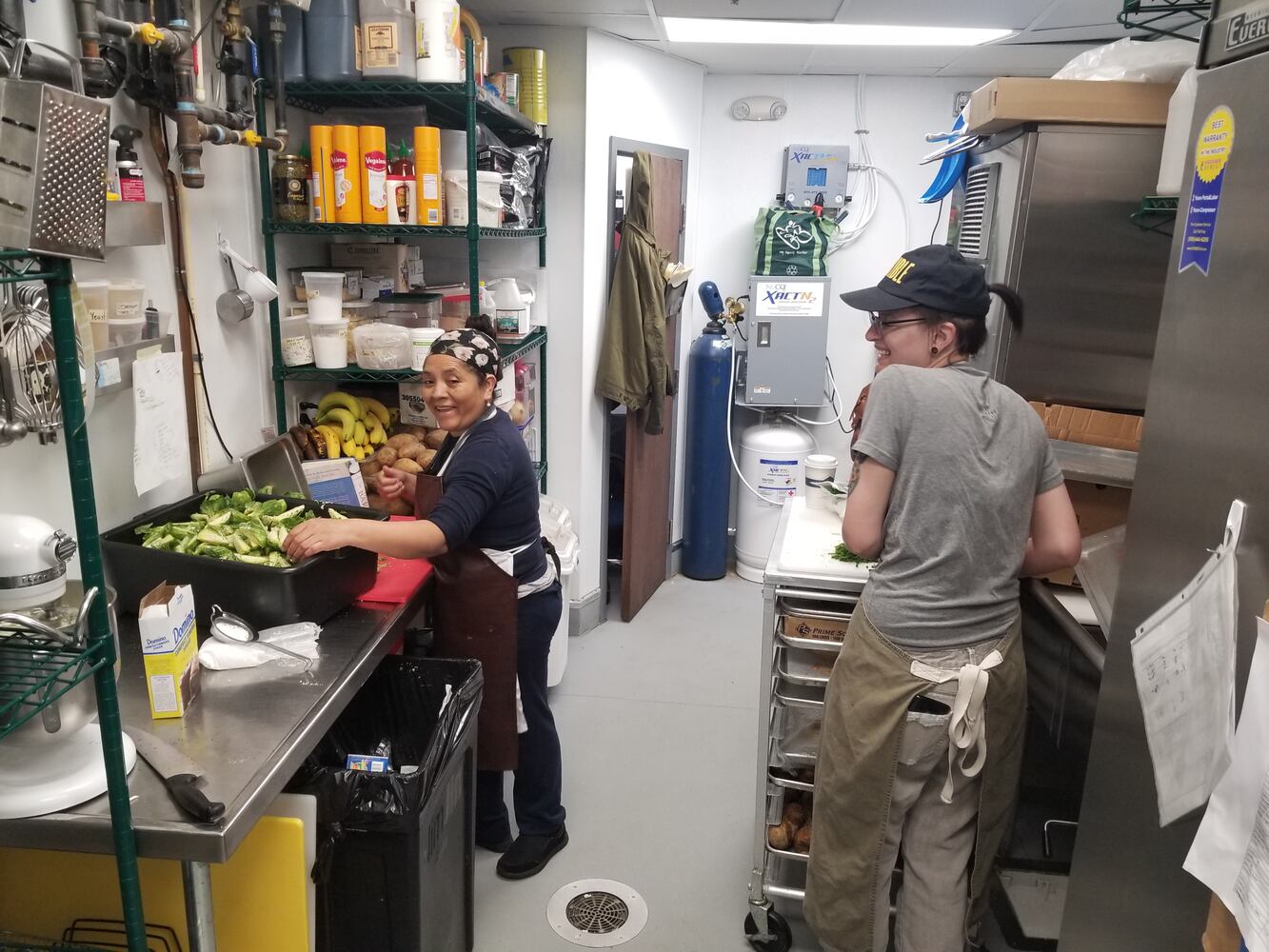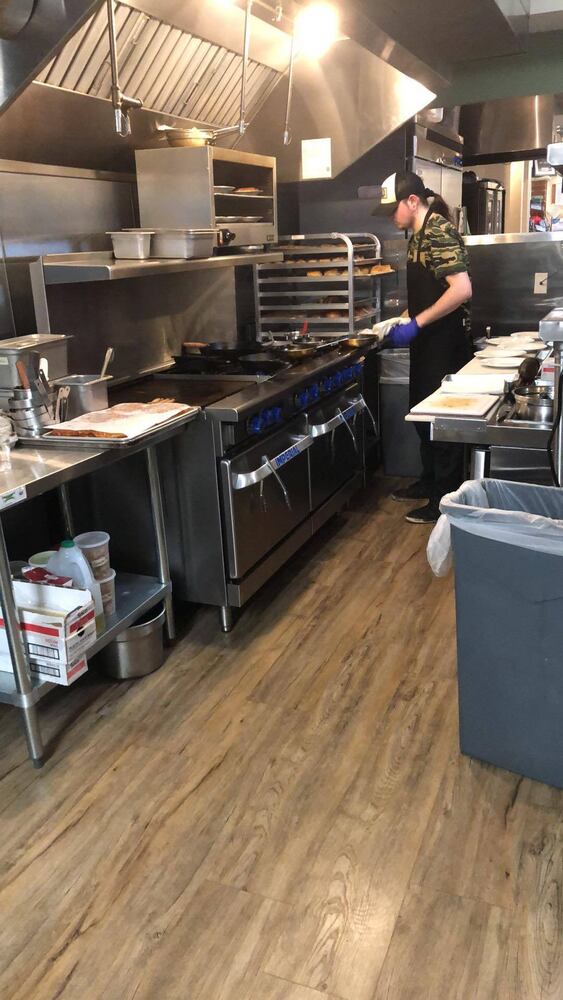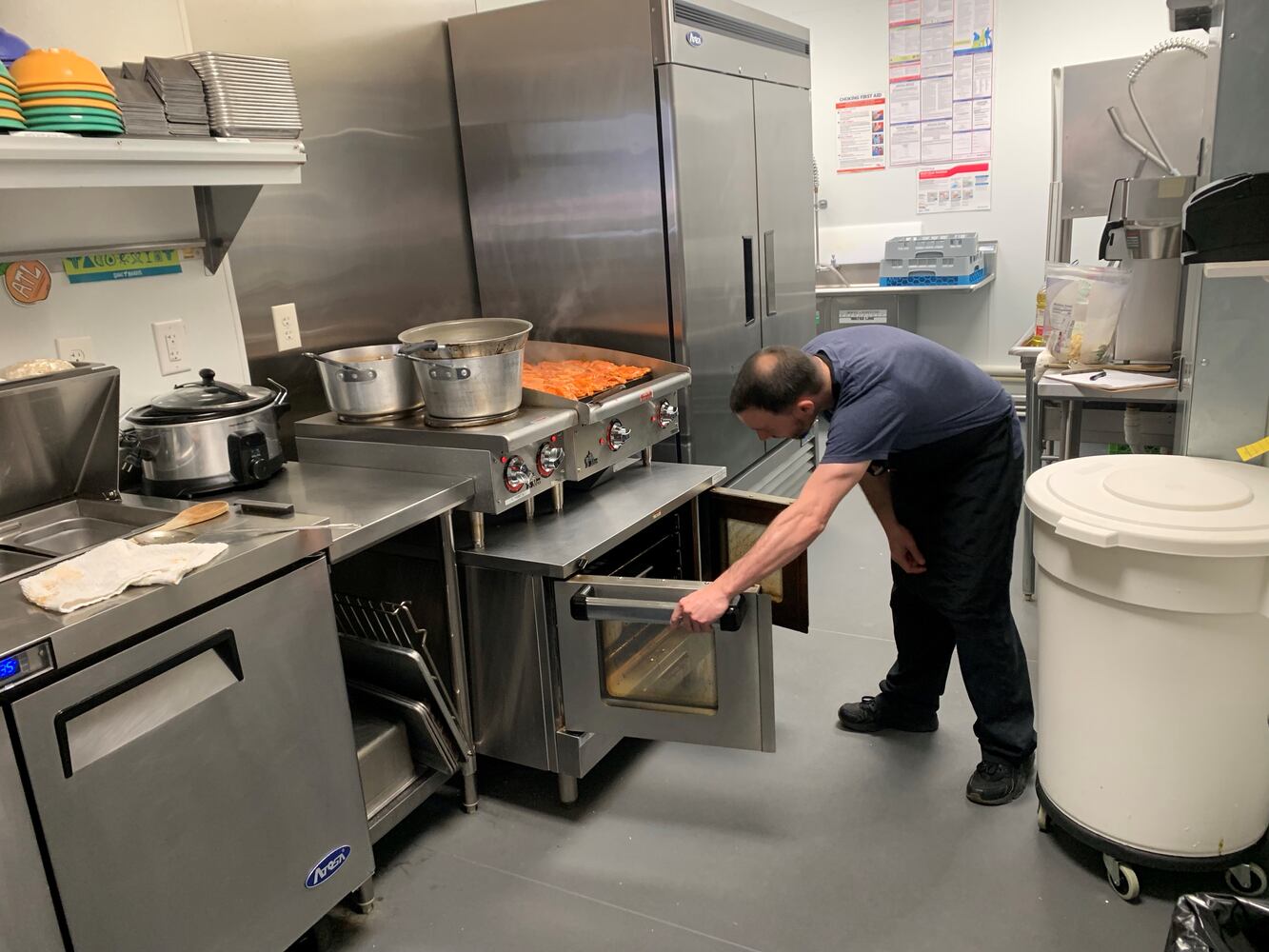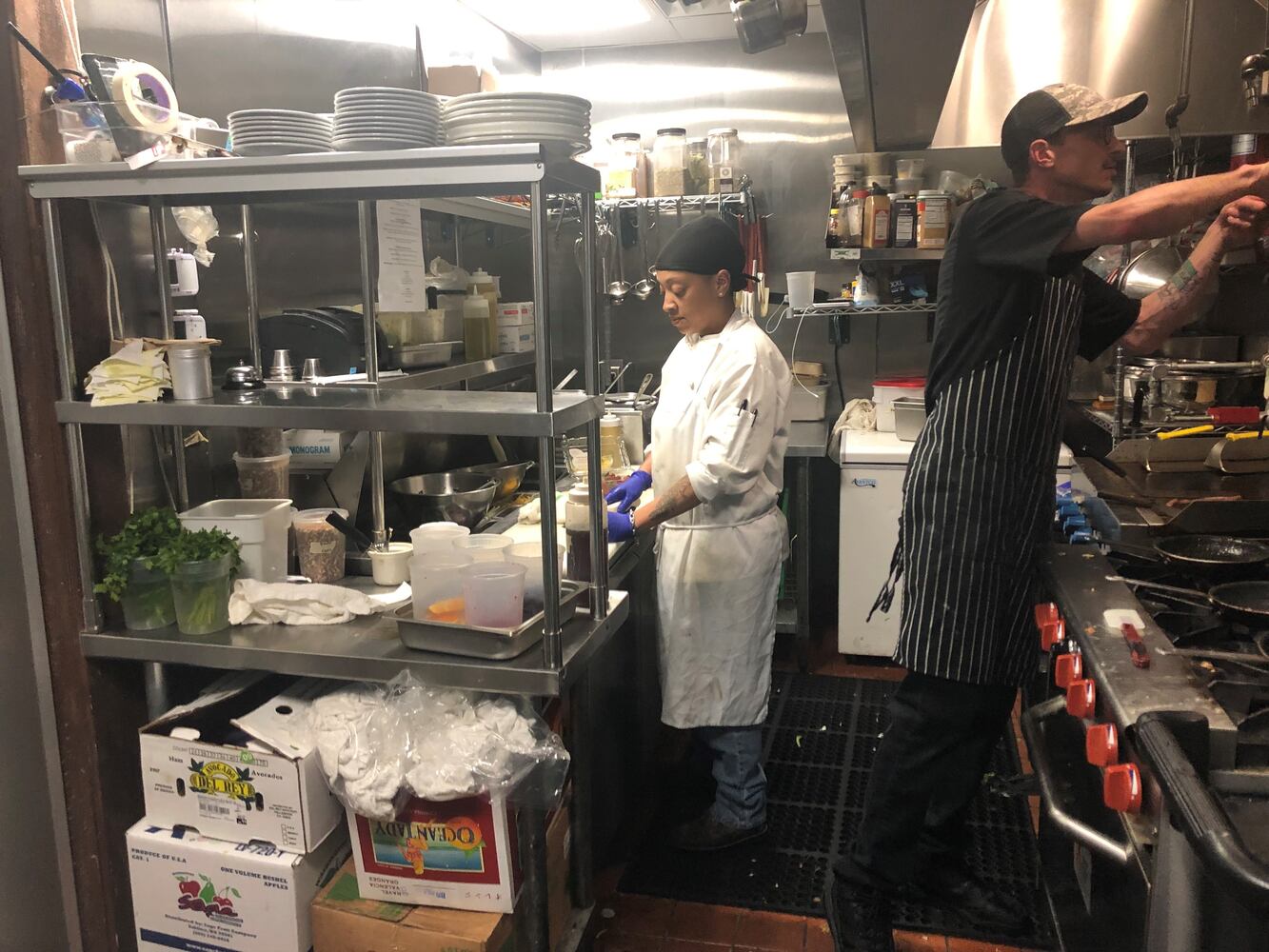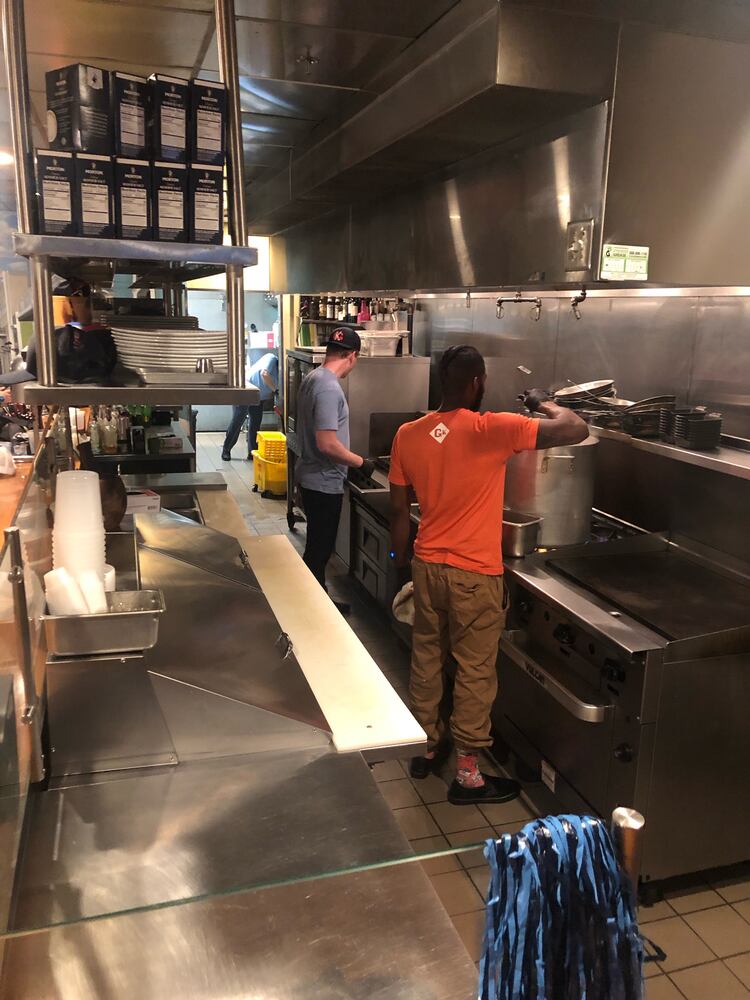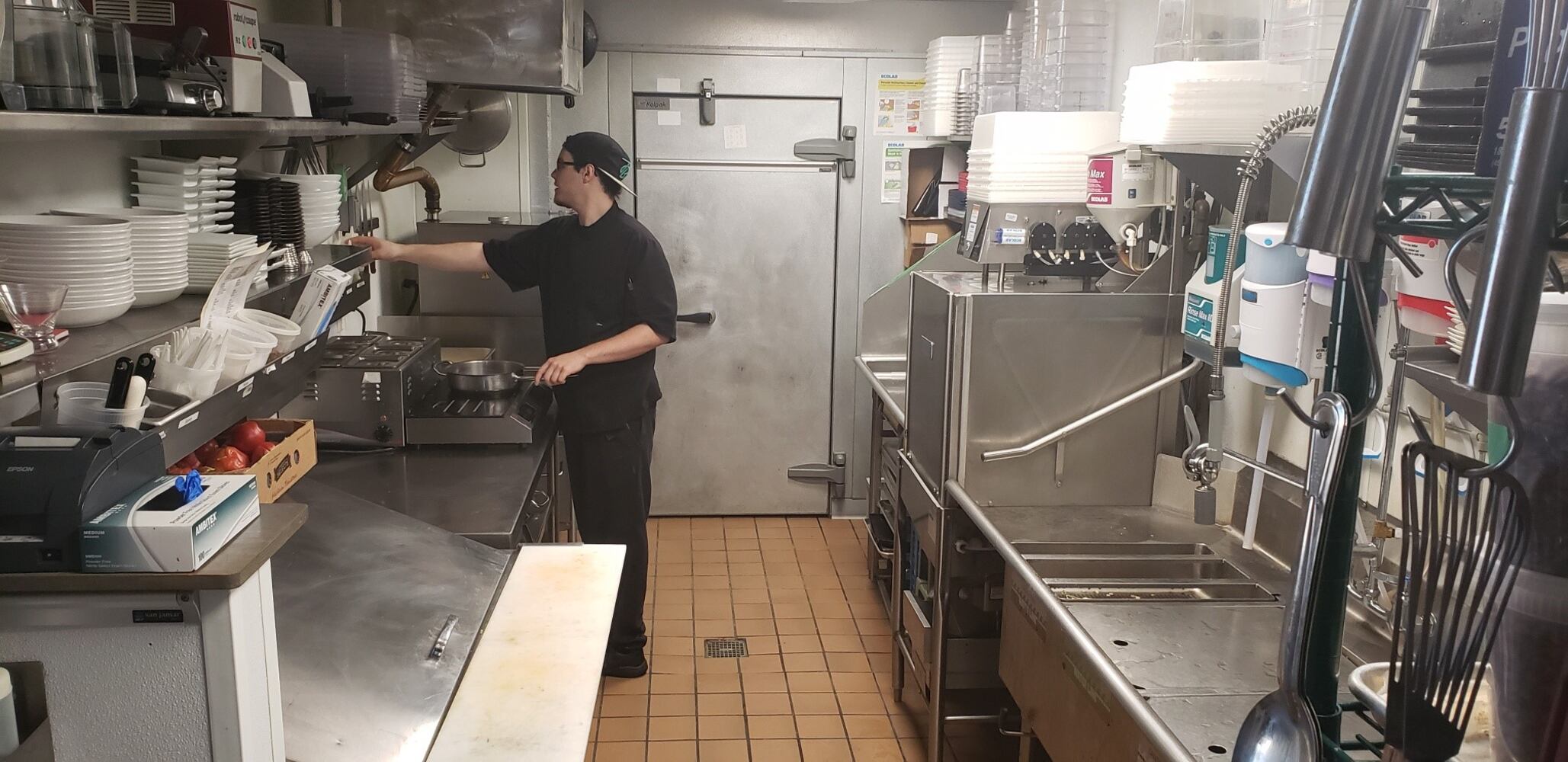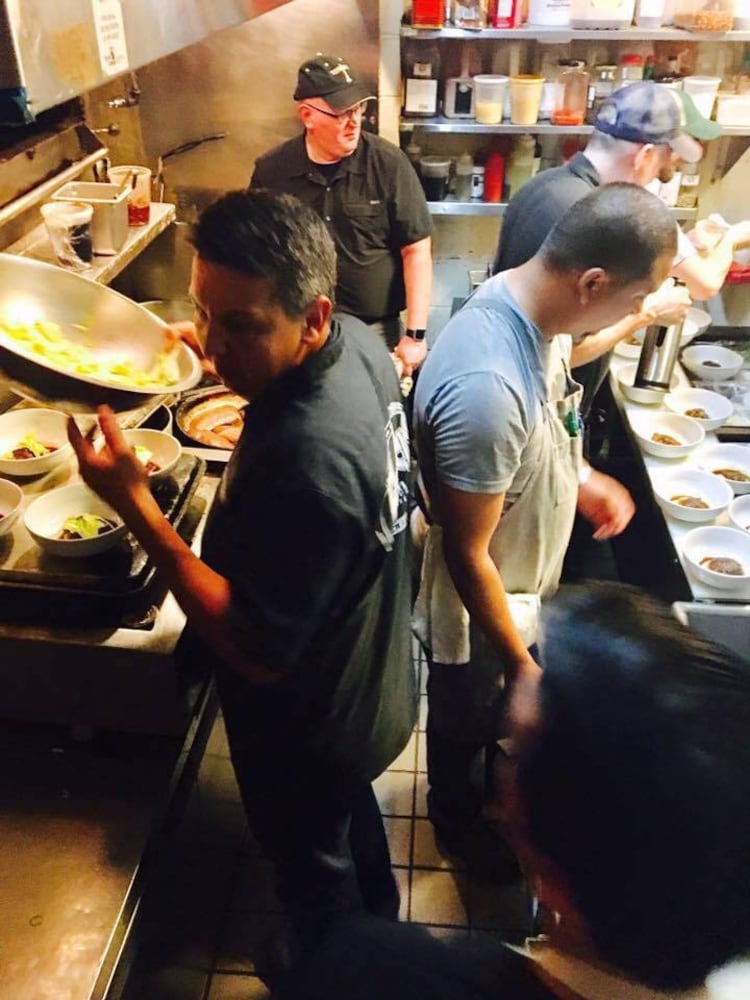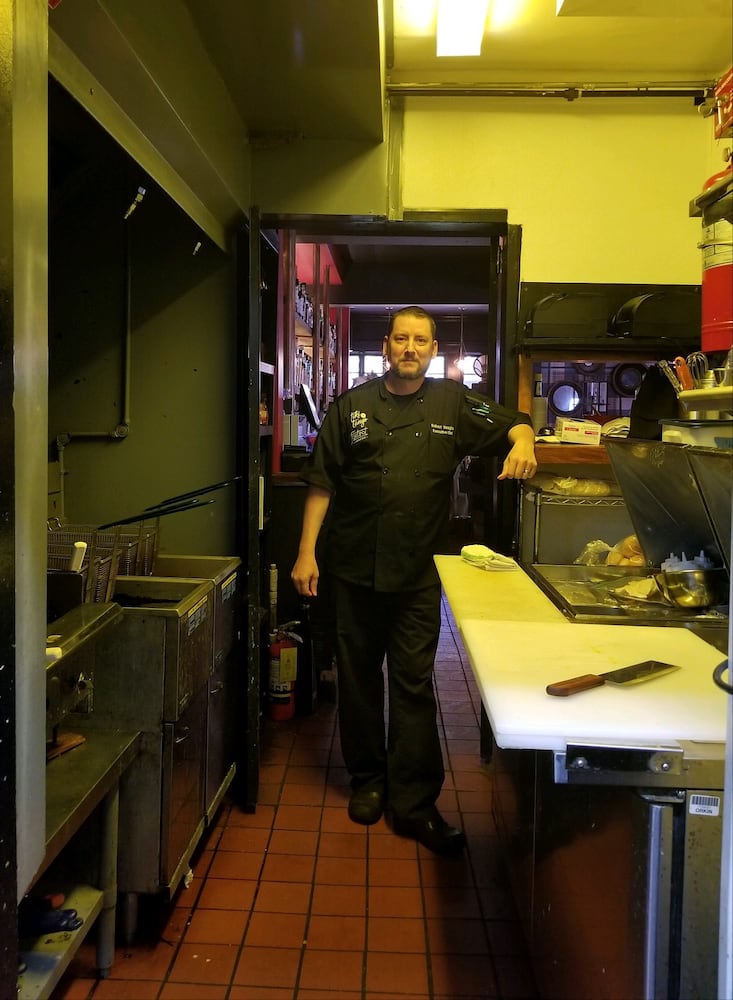Elliott Street Pub. Eddie’s Attic. Steinbeck’s. 8Arm. Spring. Full Commission.
What do these metro Atlanta restaurants and bars have in common? A tiny kitchen.
That restaurants like these, with cramped kitchen quarters, manage to dish up anything at all is a wonderment. It’s made possible thanks to an efficient design and layout, a smart menu, and fast hands who know how to dance on the line, even when packed like sardines with their peers.
Sitting in the shadows of massive Ponce City Market is itsy bitsy 8Arm. Owner Nhan Le estimated that, on a busy Saturday, the full-service restaurant does upward of 300 meals, referred to as "covers" in the restaurant industry — a mind-blowing number, considering that the food comes out of a kitchen that is no larger than 200 square feet. The space holds four people at most — two cooks, a chef garde manger and a dishwasher. Everything — from the pork belly to the octopus to the five-minute egg risotto — is made using just a six-burner stovetop, a grill and a fryer.
Steinbeck's in Decatur is an easy contender for the tiniest kitchen title. The space doesn't allow for more than two cooks on the line, with all of 10 to 15 square feet for a dishwasher to keep the plate procession in motion. Crammed into this space with chef Andy Gonzalez and his A-team is a grill, a six-burner stove, two fryers, an oven, a finishing oven known as a salamander, and a pizza prep station. Adding ramen to the Tuesday lineup recently has further complicated things. "Ramen requires more space than people can imagine," Gonzalez said, explaining that he had to reconfigure the kitchen to employ a hot well to make the brothy noodle dish.
At Foxtrot Liquor Bar in Midtown, chef Robert Vaughn puts on a one-man show in his 10-by-12-foot kitchen, which he refers to as "my little submarine." He juggles a couple of fryers, a flat-top grill and a small convection oven, while also handling all the prep work, dishwashing and breakdown at the end of the night. Oh, and keep in mind that, not only is he feeding folks at Foxtrot, but also those at new Tiki Tango next door.
However, the winner of the tiny kitchen award just might go to Elliott Street Pub in Castleberry Hill. That kitchen is the size of a broom closet. "It's smaller than my bathroom next door to it," chuckled Mike Jakob, who co-owns the bar and live music venue with his brother, Pete Jakob. Typically, one lonely soul slaps together sandwiches in the scullery space, but, on busy days, they jam in two folks, who get by with just a slicer, microwave, steam table, panini press, belly cooler and a sink. Jakob estimates that, on extremely busy days, such as Atlanta United home matches, the team works at a max speed of 75 SPH — sandwiches per hour.
The success of the food menu at Elliott Street is a point of pride for Mike Jakob. He and his brother decided to focus on sandwiches, because they didn’t want to build a big kitchen. After all, their background was in opening bars and nightclubs, not restaurants. Using just 35 ingredients, they created a lineup for 30 different sandwiches, the most complicated being the French dip, because it requires the most equipment to make, and the heavyweight being the Ultimate, piled with nearly all 35 ingredients in stock.
Credit: HANDOUT
Credit: HANDOUT
Full Commission owner David Traxler had some say in the kitchen design during the construction of his new building, part of the development at Larkin on Memorial in Grant Park, but the space itself is ridiculously dinky. That makes the efforts of its culinary team all the more impressive, particularly the baked goods made by Executive Chef Elodie Westover.
Traxler ticked off all the house-made items: brioche, sourdough, white bread, English muffins, a riff on a Pop-Tart toaster pastry, along with a daily rotation of scones, danishes and even gluten-free banana bread. “Any place with that much bread would have two to three ovens,” Traxler said. “She has learned how to be a baker in a small kitchen.”
“I have your standard KitchenAid — the one you would see in your house — and one oven with three racks,” Westover said. To get the job done, she hand-mixes sourdough, and comes in during off hours, sometimes even at midnight, when there’s more space to work her bread magic. Due to storage constraints, she has limited herself to two types of flours, and must place orders frequently with suppliers.
Indeed, staying realistic about the confines of the kitchen has meant curbing her desire to add other items to the menu. “I want to get a real croissant on the menu, but that is a whole separate beast,” Westover said.
Chef Savannah Sasser can relate to the wish list that never will come true. She would love to offer ice cream and other frozen desserts at the Expat in Athens, but doesn't have a freezer. There's simply no space. Adept at making pasta, she had to stay away from ravioli, because it won't sit well in a cooler.
Learning to adapt to the space, and use it as efficiently as possible, is a key factor cited by the more than 15 chefs interviewed for this article, when discussing how they successfully manage food service production in sardine-style work conditions.
Credit: HANDOUT
Credit: HANDOUT
The efficient setup of the line at Hen Mother Cookhouse in Johns Creek is what enables owners Soraya Khoury, husband Jesus Loyola and her sister Sarah Khoury to manage more than 300 covers on a busy Sunday. The "hot side" features just one oven, plus a six-burner, two of which barely function. The "cold side" has enough room to accommodate a panini press and waffle maker.
“We are always amazed of what we accomplish out of this kitchen,” Soraya Khoury said. “It’s all smartly done.”
Khoury, like Westover, overcame storage issues by thinking vertically. “Shelving has saved our lives,” Westover said. “We have a lot of good shelf space up top. Instead of building out, you build up.”
Jason Storms, of Eddie's Attic in Decatur, and Conner Slewitzke, of Gracious Plenty Bakery and Breakfast in downtown Roswell, both cited the importance of cross-utilizing ingredients as a solution to manage their small kitchens. For example, how many dishes can incorporate chicken, or the same fresh produce item? Scaling a menu down to use the least amount of ingredients possible not only keeps things streamlined, but also decreases storage needs, and waste, because the product moves quickly.
Credit: HANDOUT
Credit: HANDOUT
A few culinarians paused to consider the herculean feats that their teams accomplish in tiny kitchens.
“Curing the meat,” said 8Arm’s Nhan Le. “We do charcuterie occasionally. We don’t have the space, but we always find a niche somewhere to store the meat.”
"The dish that will push the boundaries is the beef two ways" said Brian So, chef-owner of Spring in Marietta. The dish features a roasted flat-iron steak with a braised short rib, wrapped in caul fat. "It's two techniques on the plate," he said, noting that the restaurant has only one oven, and it's always kept at the same temperature.
"We make everything here from scratch," said Todd Webster, executive chef of Woodstock's Rootstock and Vine. The menu includes an 8-ounce steak, confit octopus, pork belly, pastas and more. "It's magical that anything like this comes out of this kitchen," he said.
While the workspace at Porch Light Latin Kitchen in Smyrna is highly contained, chef-owner Andre Gomez couldn't contain his enthusiasm for what his team achieves daily. "All the braising and smoking and confit that we do. A whole pig: We've done up to five in a day!"
Maximize your home kitchen space
Atlanta chefs offered the following tips for home cooks who want to maximize their space and work more efficiently in the kitchen:
1. Stay organized. Prep as much as possible before you begin cooking.
2. Clean up your space as you work.
3. Be smart about storage: Maximize your use of vertical space and consider using square storage containers instead of round ones.
4. Everything needs a home. Store items in logical places to minimize movement while cooking. For example, towels and oven mitts should be stored next to the oven.
5. Think of storage, prep and cooking areas as a triangle, and try to keep the triangle as small as possible to limit unnecessary movement.
6. Don’t be afraid to modify a recipe or a cooking method. For example, if you need to cook a lot of meat in the oven at one time, think creatively about what cookware you can use. It may not be traditional, but it still can get the job done.
7. Don’t buy cooking appliances or gadgets that have only a single use.
8. Take it outside: Use an outdoor grill or smoker to free up the kitchen for other uses.
9. Take stock of your inventory before you go shopping, to cut down on the possibility of wasting food.
RELATED:
Read more stories like this by liking Atlanta Restaurant Scene on Facebook, following @ATLDiningNews on Twitter and @ajcdining on Instagram.
About the Author
Keep Reading
The Latest
Featured
